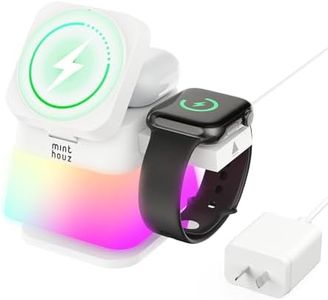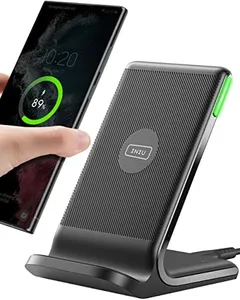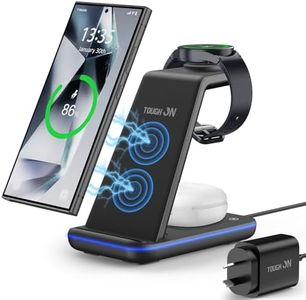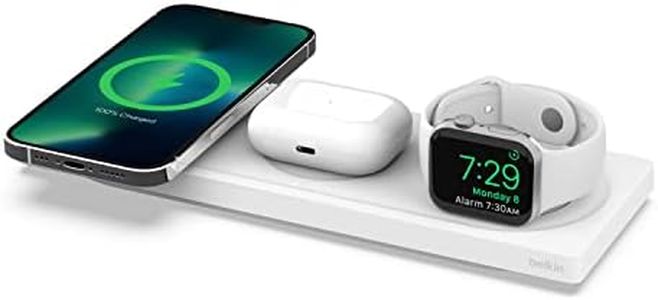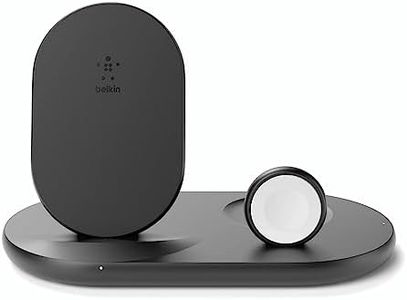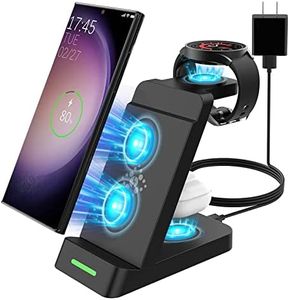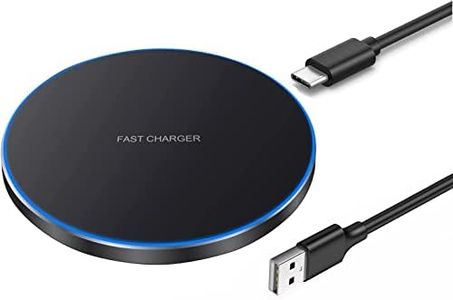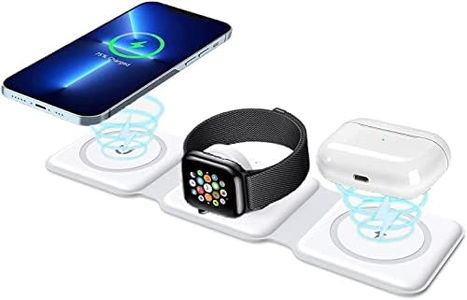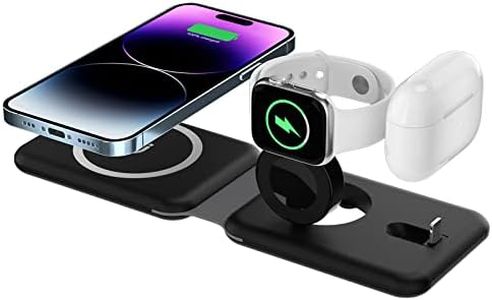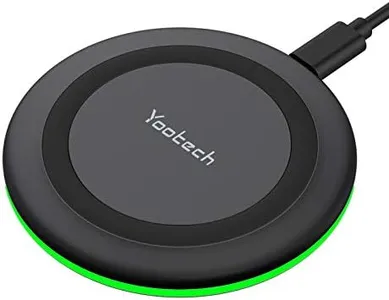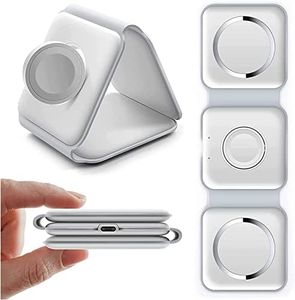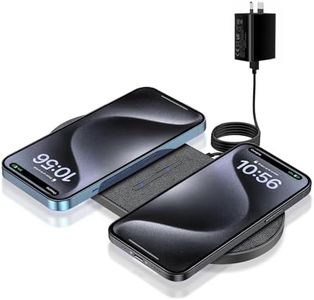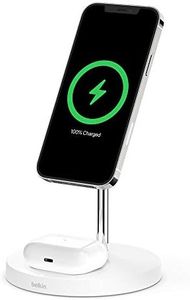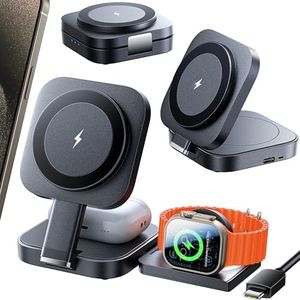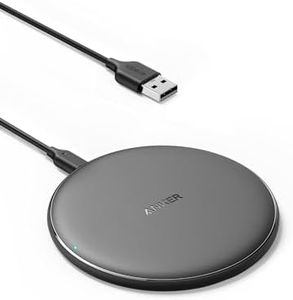We Use CookiesWe use cookies to enhance the security, performance,
functionality and for analytical and promotional activities. By continuing to browse this site you
are agreeing to our privacy policy
10 Best Wireless Charging Pads
From leading brands and best sellers available on the web.Buying Guide for the Best Wireless Charging Pads
Choosing a wireless charging pad can really simplify your daily routine by eliminating the need for cables every time you want to recharge your devices. To get the best value and convenience, it’s important to know what makes a good charging pad and how various features affect usability. Your lifestyle and the devices you intend to charge are key factors in deciding which charging pad will work best for you.Charging Speed (Wattage)Charging speed, often listed in watts (W), determines how fast your device will recharge. Different devices support different charging speeds, so higher wattage is not always better if your phone or gadget doesn't support it. Generally, charging pads come in segments like 5W, 7.5W, 10W, and 15W. Lower wattages (like 5W) are slow but work on nearly all devices, while 10-15W pads can provide much faster charging for compatible phones. To choose the right one, check the maximum wireless charging speed supported by your device and select a pad that can deliver that; overshooting offers no extra benefit.
Compatibility (Qi Certification)Compatibility refers to whether the charging pad can work with your specific device. Qi certification is a worldwide standard for wireless charging used by most modern smartphones and earbuds. Always ensure the charging pad is Qi-certified, which guarantees safety and broad compatibility. If you have non-mainstream gadgets, double-check their wireless charging standard to avoid disappointment.
Number of Devices SupportedSome wireless charging pads can charge more than one device at a time, which is measured by the number of active charging spots available. Single-device pads are simple and compact, best for solo users or for nightstands. Multi-device pads (usually able to charge two or three items simultaneously) are great for those with several gadgets or for families. Think about how many devices you'd typically want to charge at once to guide your choice.
Pad Surface and Build QualityThe surface material and general build quality of a charging pad affect its durability, aesthetics, and how well it grips your devices so they don’t slip. Pads can have surfaces made of plastic, silicone, fabric, or even leather. Silicone and textured surfaces are less slippery and keep your phone in place. If you want something stylish for a visible spot like your desk, pick a material and color that suits your taste, but always ensure it won’t scratch your device.
Power Adapter InclusionMany wireless charging pads are just the pad itself and don't come with a wall adapter or cable. This matters because not all adapters deliver enough power for fast charging. If you don’t already have an appropriate USB wall adapter, picking a pad that comes with one saves trouble and guarantees you get the full advertised speed. Check if the manufacturer includes an adapter and what type it is.
Device Alignment and Indicator LightsSome charging pads are very forgiving of where you place your device, while others require precise placement for charging to begin. Easy-alignment pads, sometimes with subtle guides or magnets, are more convenient in the dark or when you’re in a hurry. Indicator lights show charging status but can be distracting at night if they’re too bright. Think about your placement habits and preference for feedback when weighing these features.
PortabilityPortability is about the size and weight of the charging pad, making it easier to pack for travel or move between rooms. Ultra-thin and lightweight pads are best if you’re often on the go or need to charge in multiple locations. If you always keep it in one spot, portability matters less. Think about your routine and whether you’ll need to move the charger often to help decide.
